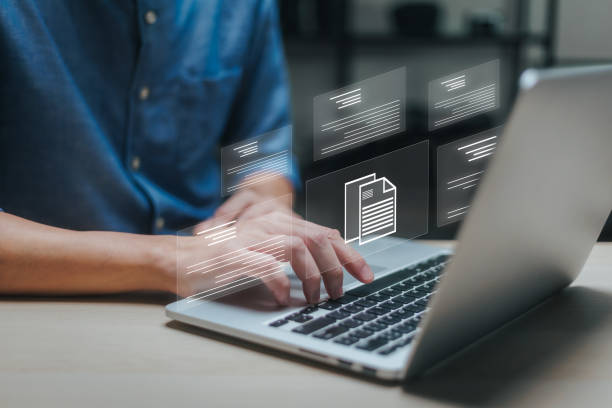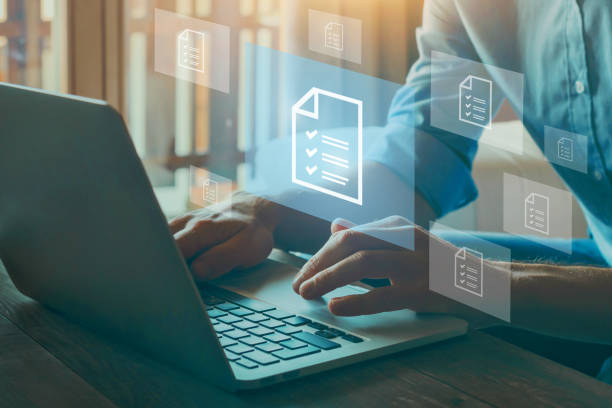Introduction to On-Page SEO and its Importance
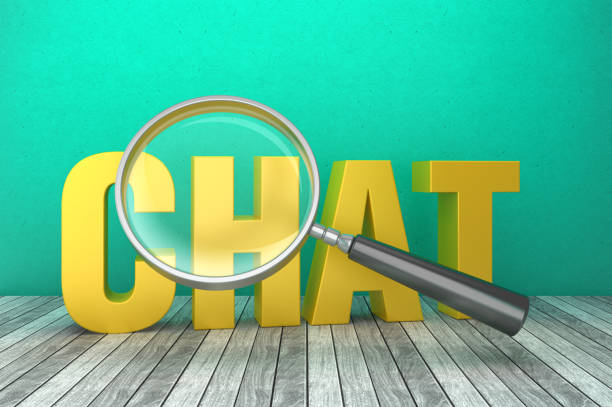
On-page SEO (#OnPageSEO #InternalOptimization #IntSEO) is one of the main pillars of any successful SEO strategy that is often overlooked.
While off-page SEO focuses on factors outside the website, such as backlinks and social signals, on-page SEO refers to all actions taken within your website to improve its ranking in search engine results.
These actions include optimizing content, site structure, HTML codes, loading speed, and user experience (UX).
The importance of on-page SEO lies in helping search engines better understand your site’s content and recognize its value.
Without a strong foundation in on-page SEO, even the best off-page SEO strategies cannot be fully effective and bring targeted traffic to you.
This educational section will show you why every website owner should pay special attention to this aspect of optimization.
In fact, internal site optimization ensures that your efforts in producing valuable content are seen and understood by search engine robots, which greatly helps in better ranking your pages.
This process includes everything from choosing appropriate keywords to URL structure and page loading speed.
In this article, we will take an explanatory and comprehensive approach to this topic to familiarize you with all its aspects.
A correct understanding of how search engines evaluate a page and how they recognize positive signals from users is the first step towards effective on-page SEO implementation.
The ultimate goal is not only to satisfy search engines but also to provide a flawless user experience that ultimately leads to increased site credibility and conversion rates.
Investing in on-page optimization is a long-term investment for the sustainability and growth of your online business.
Are you dissatisfied with the low sales of your online store?
Rasawweb is your solution for having a professional and high-selling online store.
✅ Significant increase in sales and revenue
✅ Easy and enjoyable shopping experience for customers
⚡ Get a free consultation from Rasawweb now!
Key Components of On-Page SEO and Keyword Selection
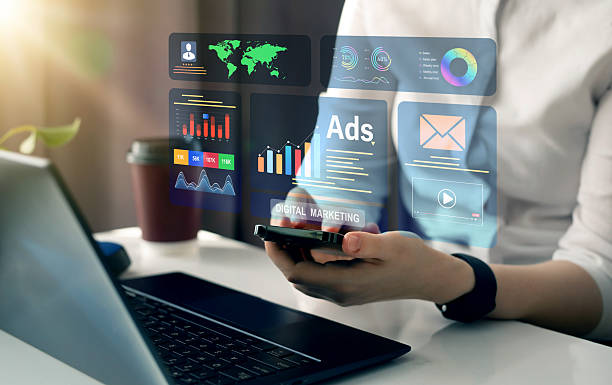
At the heart of every successful on-page SEO strategy are two vital elements: keywords and content quality.
Choosing the right keywords is the first step in attracting targeted traffic to your website.
This section examines analytical methods for finding high-volume and relevant keywords that not only have high search volume but also accurately reflect User Intent.
For example, informational, navigational, commercial, and transactional keywords each require a different content approach.
Using tools like Google Keyword Planner, Ahrefs, Semrush, and even related searches on Google can be very helpful at this stage.
After identifying primary and long-tail keywords, it’s time to produce content that naturally and intelligently incorporates these keywords.
Emphasis is placed on specialized and valuable content that not only meets user needs but also provides information beyond their expectations.
Quality content means text that is grammatically correct, fluid, comprehensive, original, and most importantly, unique.
Avoiding keyword stuffing (excessive repetition of keywords) is very important, as it can be penalized by search engines and severely degrade user experience.
This is a guidance approach to ensure that every word and sentence serves your SEO goal without disrupting user experience.
Focusing on creating engaging content that encourages users to interact and participate can significantly impact your on-page SEO.
Search engines give more importance to content that users spend a lot of time reading and that shows positive interactive signals (such as low bounce rate and high dwell time).
Therefore, content optimization not only involves placing keywords but also includes creating a rich and beneficial reading experience.
This optimization should be such that both search robots and human users clearly understand the value and relevance of your content.
Technical Aspects of On-Page SEO: Site Structure and Internal Linking
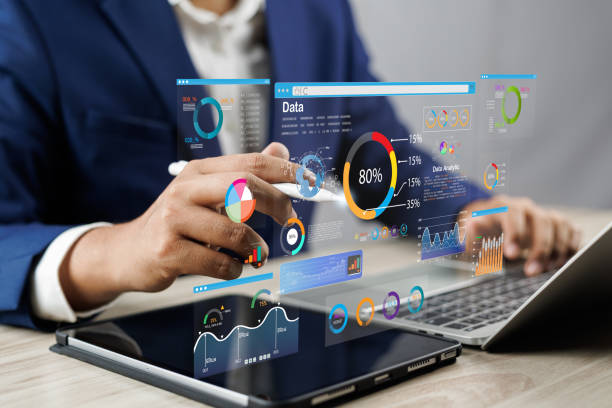
On-page SEO is not limited to content; technical aspects of the site also play a crucial role.
Site structure and internal linking are two main pillars in this section that help search engines crawl and index your pages better.
A logical and hierarchical site structure (such as a silo structure) helps search engines easily crawl and index your pages and understand the semantic relationship between different pages.
This includes designing readable and descriptive URLs, using XML and HTML sitemaps, and ensuring easy access to all important pages through website navigation.
Clean and structured URLs, like yourdomain.com/category/post-title, are not only clearer for search engines but also more user-friendly for users.
Internal linking, which means creating links between different pages of your website, distributes SEO value (Link Equity) throughout the site and helps users easily find relevant information.
This process should be purposeful and help strengthen core pages and their keywords, and also show search engines which pages on your site are more important.
Using descriptive and relevant anchor texts in internal links is very important.
For example, instead of “Click here”, use text like “Comprehensive Guide to Internal Linking” which clearly states the topic of the destination page.
This is a specialized approach that helps optimize crawling and understanding of your content by search robots.
Site structure also directly impacts user experience (UX); a website that is easy to navigate keeps users for a longer time and reduces the bounce rate.
This sends positive signals to search engines and contributes to overall internal site optimization.
| Linking Method | Advantages | Disadvantages | Main Use Case |
|---|---|---|---|
| Contextual Text Links | Passes SEO authority (Link Juice), increases dwell time, improves user experience by providing relevant content. | Requires relevant and quality content, may seem excessive if not used carefully and naturally. | Blog articles, product description pages, comprehensive guides. |
| Navigation Links (Menu, Footer, Sidebar) | High consistency, easy access to main pages and categories, overall improvement of site structure and hierarchy. | Less SEO power for sub-pages, may not be very useful in specific content, limited space. | Homepage, categories, contact us, about us, service pages. |
| HTML and XML Sitemaps | Overview of site structure for users and search engines, improves crawling and indexing of pages. | Less for end-users, less direct impact on a specific page’s ranking, requires continuous updates. | Large websites with lots of content, news or e-commerce sites. |
| Breadcrumbs Links | Improves user navigation, shows user’s path on the site, improves hierarchical structure and SEO signals. | Requires precise hierarchical structure, may be less necessary for small sites. | E-commerce stores, blogs with deep categories. |
Content Optimization for On-Page SEO: Readability and User Experience
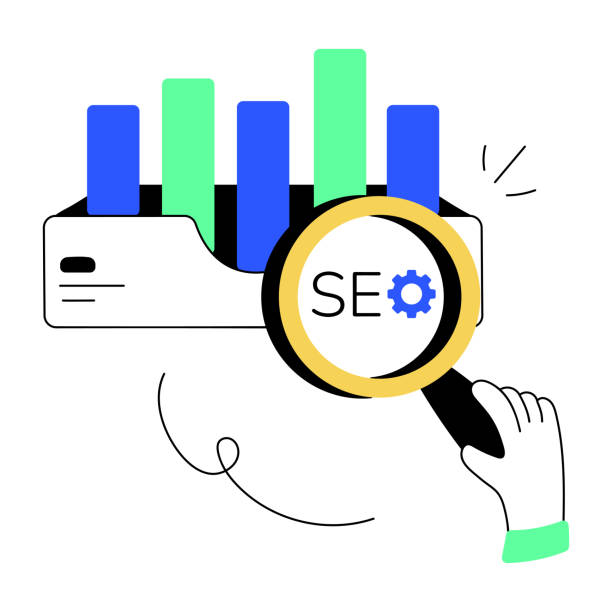
Content optimization for on-page SEO goes beyond keyword placement; this process emphasizes readability and user experience (UX).
Your content should not only be understandable to search engines but also engaging, digestible, and inspiring for the audience.
Using short paragraphs (maximum 3-4 sentences), simple and fluid sentences, subheadings (H2, H3, H4) to break up the text and create visual hierarchy, and bulleted or numbered lists can significantly increase readability.
These actions help users scan and understand information faster and prevent fatigue.
In addition, proper use of white space around text and images, appropriate font size, and optimal color contrast helps improve the visual experience.
Content that is visually appealing and structured encourages users to spend more time on your page, which itself is a positive signal for search engines and reduces the bounce rate.
This aspect of internal optimization is an educational and continuous process that requires an understanding of user psychology and web design principles.
Search engines are increasingly focusing on user interaction signals such as Bounce Rate, Dwell Time, and Click-Through Rate (CTR) from search results.
Entertaining yet informative content can improve these metrics and show Google that your site has high value for users.
Also, providing thought-provoking content that makes the user think, encourages deeper reading, or prompts them to search for more information, can significantly increase engagement.
Optimizing Title Tags and Meta Descriptions is also an important part of this process; these elements are the first thing users see in search results and must be attractive and accurate to encourage users to click.
Adhering to these principles will greatly help in the continuous improvement of your website’s on-page SEO and lead to increased visibility and organic traffic.
Did you know that 94% of users’ first impressions of a business are related to its website design? With professional corporate website design by **Rasawweb**, turn this first impression into an opportunity for growth.
✅ Attract more customers and increase sales
✅ Build credibility and trust in the audience’s eyes⚡ Get a free website design consultation!
Optimizing Images and Videos for On-Page SEO
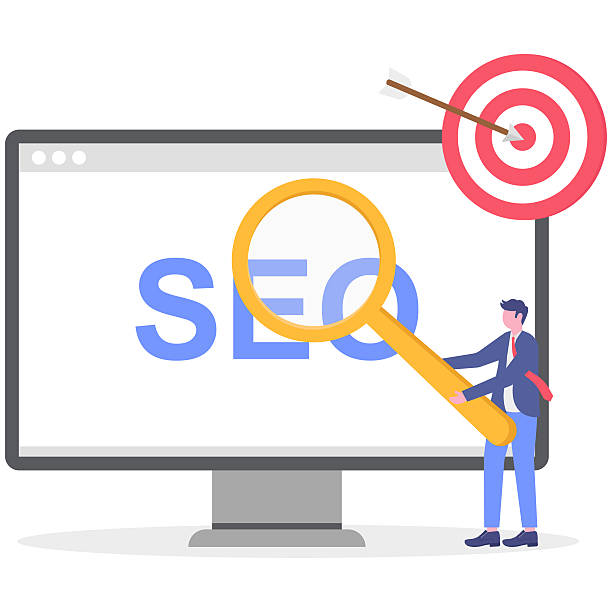
In today’s world, where visual content reigns supreme and users prefer watching videos and viewing images, optimizing images and videos for on-page SEO is of paramount importance.
This not only helps improve your ranking in image and video search but also improves page loading speed and overall user experience.
For images, it is essential to compress file size without noticeable loss of quality (using tools like TinyPNG or Compressor.io), use modern formats like WebP (which significantly reduces file size), and choose descriptive file names that include keywords.
Also, alt tags for images are very important; this tag not only helps search engines understand the image content but also provides a description of the image for visually impaired users (who use Screen Readers) and increases site accessibility.
This is a guidance and essential step for accessibility and SEO.
For videos, in addition to compression and using appropriate hosting (like YouTube or Vimeo that perform automatic optimizations), using video Schema Markup to introduce its content to search engines, creating a transcript or subtitles to improve accessibility and crawlability of audio content, and optimizing video title tags and descriptions can help increase their discoverability and ranking.
Interactive and engaging videos can significantly increase user dwell time on the site.
This is a specialized aspect of internal optimization that requires attention to technical and content details.
Optimizing visual content not only sends positive signals to search engines but also helps improve the user experience, as pages with faster loading and more engaging visual content engage users more and reduce the bounce rate.
Therefore, every element of on-page SEO, from text to images and videos, must be carefully managed and optimized.
Mobile On-Page SEO and Core Web Vitals
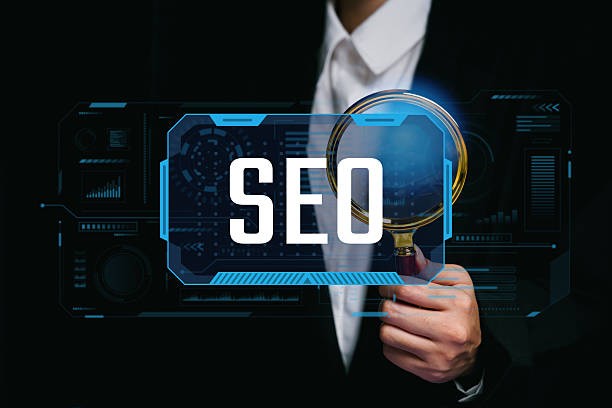
In the current era, where more than half of internet users access websites via mobile devices, mobile optimization, or Mobile-First Indexing, is a vital element in on-page SEO.
Google has long emphasized that your site’s mobile version content is the primary reference for its indexing and ranking.
Therefore, ensuring that your website is responsive (i.e., compatible with different screen sizes without compromising content quality or user experience) and provides a smooth and optimized mobile user experience is essential.
Furthermore, Core Web Vitals, which are a set of metrics related to a page’s loading speed, visual stability, and interactivity, are increasingly affecting site rankings and are considered important factors in Google’s ranking.
These metrics include Largest Contentful Paint (LCP) for the loading speed of the largest content element on the page, First Input Delay (FID) for interactivity (the site’s response speed to the first user interaction), and Cumulative Layout Shift (CLS) for visual stability (the degree of layout shift of page elements during loading).
Improving these metrics directly impacts your on-page SEO and site ranking.
Reducing file sizes (images, CSS, JavaScript), optimizing server-side and client-side code, using a CDN (Content Delivery Network) to deliver content from the closest server to the user, and caching content can help improve Core Web Vitals.
This analytical and specialized approach requires continuous monitoring and technical optimization.
Tools like Google PageSpeed Insights and Google Search Console can provide valuable information about your site’s performance on mobile and Core Web Vitals and identify potential issues.
A fast site with an excellent mobile user experience is not only loved by search engines but also keeps users satisfied, leading to a reduced bounce rate and increased dwell time.
This aspect of internal site optimization is more crucial than ever and should be prioritized.
Tools and Analytics for On-Page SEO
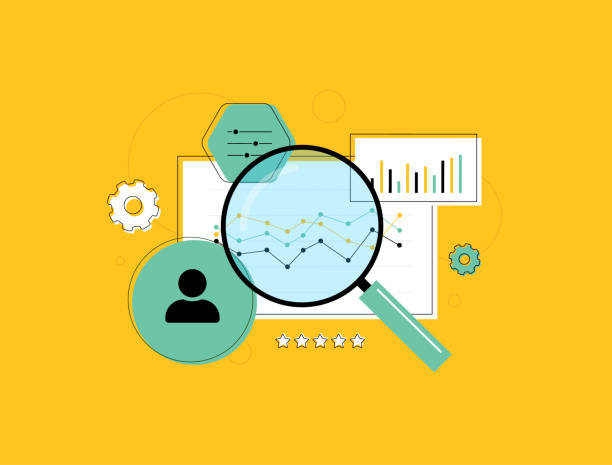
To ensure the effectiveness of your on-page SEO strategy and identify strengths and weaknesses, using analytical tools and platforms is essential.
These tools allow you to monitor your site’s performance, identify technical issues, and find new optimization opportunities.
Google Search Console is a free and very powerful tool that provides valuable insights into how Google views your site, the keywords you rank for, crawling issues, indexing errors, and Core Web Vitals performance.
This tool also allows you to submit sitemaps, inspect URLs, and manage spam links.
Google Analytics helps you understand user behavior on your site; including popular pages, dwell time, bounce rate, traffic sources, and conversion rates.
This is a specialized resource for deeper understanding of user interactions and identifying their behavioral patterns.
Paid and more comprehensive tools like Ahrefs, Semrush, and Moz also offer more advanced features such as comprehensive keyword research, competitor analysis, backlink checks, and site audits, which can significantly help in improving your on-page SEO.
These tools can help you identify trending content and new trends in your industry or field to keep your content up-to-date and always one step ahead of the competition.
A continuous analytical approach is key to SEO success.
By regularly reviewing the data and reports from these tools, you can make necessary changes to your internal optimization strategy and reap its benefits.
Using these tools is an educational part of the SEO journey and helps you make data-driven decisions and avoid guesswork.
| Tool Name | Main Application | Type | Key Points |
|---|---|---|---|
| Google Search Console | Monitors performance on Google, identifies crawling and indexing issues, reports site errors. | Free | An essential tool from Google itself, displays organic search data. |
| Google Analytics | Analyzes user behavior, traffic sources, conversion rates, popular pages. | Free (Version 4) | For a deep understanding of user interaction with site content and improving user experience. |
| Google PageSpeed Insights | Analyzes loading speed and Core Web Vitals (LCP, FID, CLS). | Free | Helps improve technical site performance and ranking in mobile and desktop results. |
| Ahrefs | Keyword research, competitor analysis, site audit, backlink analysis. | Paid | A comprehensive and powerful tool with a vast database of keywords and backlinks. |
| Semrush | Keyword research, technical SEO, competitive analysis, content marketing. | Paid | An all-in-one platform for SEO, PPC, and content marketing. |
| Yoast SEO / Rank Math (for WordPress) | On-page optimization on the WordPress platform, meta tag management, XML Sitemap. | Free/Paid | Essential plugins for WordPress users to manage on-page SEO. |
Common On-Page SEO Mistakes and How to Avoid Them
![]()
Even the most experienced SEO professionals may make mistakes in implementing on-page SEO that can render their efforts fruitless.
Recognizing these common mistakes and avoiding them is crucial for your site’s long-term success.
One of the biggest mistakes is keyword stuffing.
Although the goal is to use keywords, excessive and unnatural repetition of them leads to penalties from search engines and a poor user experience.
Instead, focus on natural and diverse use of keywords, their synonyms, and semantically related keywords (LSI Keywords).
Another mistake is neglecting site speed.
Users and search engines place great importance on page loading speed.
A slow site not only increases the bounce rate and drives users away but also lowers your SEO ranking.
Optimizing images, caching, using a CDN, and reducing the size of JavaScript and CSS codes can help solve this problem.
Also, poor or aimless internal linking is another serious obstacle to on-page SEO.
Internal links should be logical, relevant, and purposeful to distribute SEO authority throughout the site and help search engines understand the structure and importance of different pages.
Duplicate Content is also a serious problem that can reduce your ranking and confuse search engines.
Ensure that each page has unique and valuable content, and if similar content exists, use canonical tags to point to the original version.
Ignoring mobile compatibility and Core Web Vitals metrics is also a gross mistake that can severely impact your site’s visibility in search results, as Google uses a Mobile-First Indexing approach.
Improper use of title tags (H1, H2) and meta descriptions, or even forgetting them, also misses important optimization opportunities.
With a precise analysis of your site and using appropriate tools, you can avoid these mistakes and smooth your internal site optimization path, moving towards higher rankings.
Are you dissatisfied with the low sales of your online store?
Rasawweb is your solution for having a professional and high-selling online store.
✅ Significant increase in sales and revenue
✅ Easy and enjoyable shopping experience for customers
⚡ Get a free consultation from Rasawweb now!
Advanced On-Page SEO Strategies
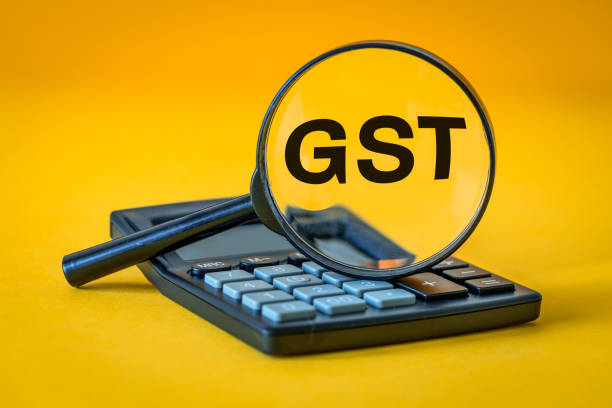
After covering the basic and fundamental principles of on-page SEO, it’s time for advanced strategies in this area that can give you a significant competitive edge and distinguish your site from others.
One of these strategies is using Schema Markup.
Schema is code that you add to your site’s HTML to help search engines better understand your content and display it in search results as Rich Snippets and Rich Results.
This can include product ratings (stars), how-tos, events, and FAQ Schema, which helps increase Click-Through Rate (CTR) and attracts more user attention.
Another is optimizing for Voice Search.
With the increasing use of voice assistants like Google Assistant and Siri, optimizing content to answer longer and more conversational questions becomes more important.
Your content should precisely answer user questions and be presented in complete and natural sentences, as voice searches typically resemble conversations.
This is a specialized and growing field that shapes the future of SEO.
Also, optimizing for User Intent means deeply understanding the reason behind user searches and providing exactly the type of content they are looking for, whether it’s information, product purchase, navigation to a specific site, or the need for an immediate solution.
This analytical approach helps improve user satisfaction and, consequently, your ranking.
Optimizing existing content (Content Refresh) instead of creating new content, rewriting and updating old articles to increase their relevance, accuracy, and comprehensiveness, is also a powerful strategy for internal site optimization.
This shows Google that your site is constantly providing fresh and relevant content and increases your site’s authority.
Reviewing and improving the on-page SEO of high-performing pages to maintain their ranking is also a key point.
The Future of On-Page SEO and Continuous Improvement
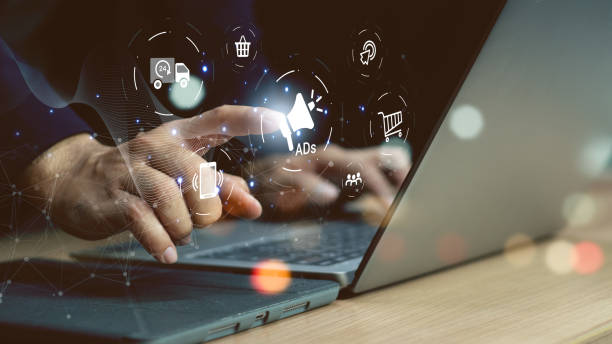
The world of SEO is constantly changing and evolving, and on-page SEO is no exception.
To maintain a competitive edge and continue success in attracting organic traffic, a continuous improvement and mindful approach to future trends is essential.
With the advancement of Artificial Intelligence (AI) and Machine Learning, search engines are becoming smarter and gaining more ability to understand the meaning behind content (Semantic Search) and user intent.
This means that focusing on producing high-quality, comprehensive, and authoritative content that covers the depth of a topic is more important than ever.
Content that truly addresses user needs, solves their problems, and provides added value will continue to dominate the future of SEO.
The emergence of Generative Search and direct answers from search engine AI (like Google’s SGE) is changing how users interact with search results, making optimization for Featured Snippets and direct answers more critical.
This is newsworthy and an important development in the SEO industry that requires adaptation and new strategies.
Sustainability and Green SEO are also gradually becoming ranking factors; reducing server energy consumption, optimizing for greater efficiency, and reducing the website’s carbon footprint can create a competitive advantage in the future and contribute to corporate social responsibility.
Therefore, internal optimization must constantly adapt to the latest developments and move away from traditional approaches.
Performance monitoring, A/B testing for various page elements, and actively listening to user feedback are part of this guidance and iterative process.
Ultimately, success in on-page SEO is not a destination, but a continuous journey that requires a commitment to providing the best possible experience for users and search engines.
This explanatory and comprehensive approach hopes to have prepared you for this journey and provided you with the necessary tools to move forward.
Frequently Asked Questions
| Question | Answer |
|---|---|
| What is On-page SEO? | On-page SEO refers to a set of actions performed within your website to improve its ranking in search engine results. This includes optimizing content, site structure, and HTML code. |
| Why is On-page SEO important? | On-page SEO helps search engines understand your page’s content and determine if your content is relevant to searchers. It is the foundation of any successful SEO strategy. |
| What are the key elements of On-page SEO? | Page Title (Title Tag), Meta Description, keyword usage, image optimization, heading structure (H1, H2, …), internal linking, and content quality are key elements. |
| How do we optimize the Page Title (Title Tag)? | The page title should include the main keyword, be attractive and clickable, and be between 50 to 60 characters (or appropriate pixels) in length to display fully in search results. |
| What role does Meta Description play in On-page SEO? | The meta description is a summary of the page content displayed below the title in search results. Although it doesn’t directly affect ranking, it helps SEO by increasing the Click-Through Rate (CTR). |
| What is the importance of using heading structure (H1, H2, H3) in On-page SEO? | Headings structure the page content and make it easier to read. H1 is usually the main title of the page and should include the keyword. H2 and H3 are used to organize sub-sections and help search engines understand the content hierarchy. |
| How to effectively use keywords in content? | Keywords should be used naturally and logically throughout the content, including the introduction, body, and conclusion. Avoid keyword stuffing. |
| What steps are involved in optimizing images for On-page SEO? | Includes compressing images to reduce size, using descriptive file names, adding appropriate Alt Text, and optimizing the image title and description. Alt Text is vital for accessibility and helping search engines understand image content. |
| What is Internal Linking and what are its benefits? | Internal linking means creating links from one page on your website to another page on the same website. This helps users easily navigate your site, distributes page authority throughout the site, and helps search engines better understand your site’s structure. |
| What is the importance of content quality in On-page SEO? | High-quality, accurate, comprehensive, and valuable content for users is the cornerstone of on-page SEO. Search engines prefer content that meets user needs. Quality content leads to longer user dwell time and a reduced bounce rate, which are positive SEO signals. |
And other services of Rasawweb advertising agency in the field of advertising
Smart Data Analysis: Designed for businesses seeking to analyze customer behavior through Google Ads management.
Smart Marketing Automation: A dedicated service for campaign management growth based on user experience customization.
Smart Data Analysis: An innovative platform for improving campaign management using real data.
Smart Sales Automation: Designed for businesses seeking to analyze customer behavior through SEO-driven content strategy.
Smart Website Development: A dedicated service for online growth based on custom programming.
And over hundreds of other services in the field of internet advertising, advertising consulting, and organizational solutions
Internet Advertising | Advertising Strategy | Advertorials
Resources
Comprehensive Guide to On-Page SEO in SeokaranOn-Page SEO Tutorial in Mihan SEO10 Important On-Page SEO Tips for BeginnersComplete On-Page SEO Checklist 2023
? At Rasawweb Afarin Digital Marketing Agency, your digital dreams come true with our expertise. From professional SEO optimization to secure website design and creative advertising campaigns, we are your partner in the digital world.
📍 Tehran, Mirdamad Street, next to Bank Markazi, Kazerun Jonubi Alley, Ramin Alley, No. 6

